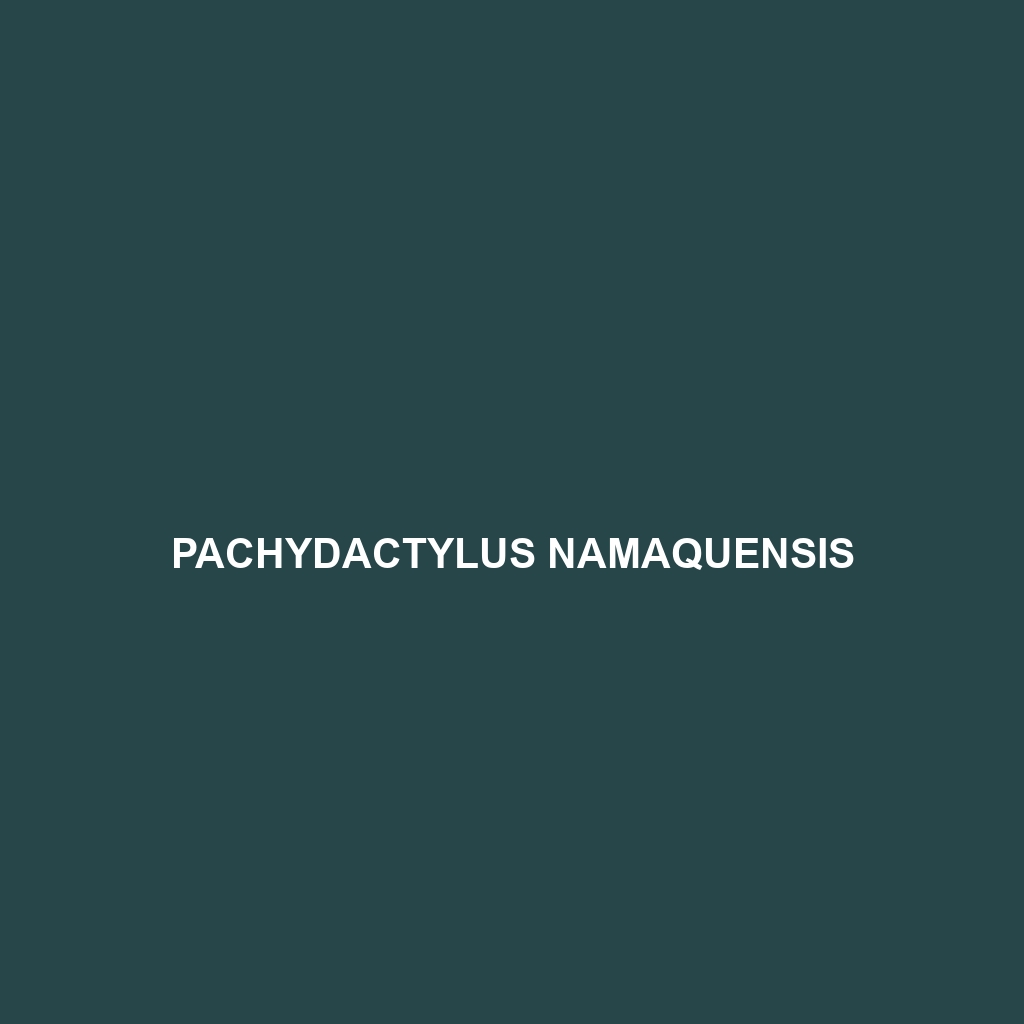Common Name
Pachydactylus namaquensis
Scientific Name
Pachydactylus namaquensis
Habitat
Pachydactylus namaquensis, commonly known as the Namaqua gecko, is primarily found in the arid regions of Southern Africa, particularly within Namibia and South Africa. This species prefers rocky outcrops and sandy areas, where it can easily camouflage itself against the mineral-rich substrate. Its habitat includes desert areas and semi-arid environments, which are characterized by low vegetation and high temperatures during the day. The Namaqua gecko is well-adapted to withstand extreme climatic conditions, making it a resilient inhabitant of these harsh ecosystems.
Physical Characteristics
The Pachydactylus namaquensis is a medium-sized lizard, averaging about 10 to 15 centimeters in length. Its body is uniquely shaped to enhance its burrowing and climbing abilities, with robust limbs and a flattened body. The coloration of the Namaqua gecko varies from light brown to grey, often featuring darker spots or mottling that aids in its camouflage against rocky substrates. A distinguishing characteristic is its large, rounded toe pads, which allow for exceptional grip on vertical surfaces, significantly contributing to its climbing efficiency. The overall morphology of this gecko is specifically adapted to its environment, making it a fascinating subject of study.
Behavior
The Pachydactylus namaquensis exhibits primarily nocturnal behavior, becoming active during the cooler hours of the night to avoid the harsh daytime temperatures of its habitat. This gecko is known for its stealthy movement and predominantly solitary living style, though individuals may congregate in larger numbers during mating season. During their nighttime foraging excursions, they exhibit unique behaviors such as sand-burying and rock-dwelling life styles. Their behavior patterns are often a focus of research due to adaptations that maximize survival in an arid climate.
Diet
The diet of the Pachydactylus namaquensis consists mainly of insects, making it an insectivore. They primarily feed on various types of beetles, ants, and other small arthropods. Their hunting strategy involves ambush techniques, where they use their natural camouflage to blend into their surroundings as they wait for prey to come near. This efficient feeding behavior highlights their role as important predators in controlling insect populations within their ecosystem.
Reproduction
The reproductive cycle of Pachydactylus namaquensis typically occurs during the late spring and summer months, coinciding with the warmer weather when food sources are abundant. Mating rituals involve elaborate courtship behaviors, including displays of color change and movements to attract females. After mating, the female lays a clutch of eggs in a safe, concealed location, often under rocks or in sand burrows. The incubation period lasts around 6 weeks, after which tiny hatchlings emerge, ready to begin their independent lives. Parental investment is minimal post-hatching, typical of many lizard species.
Conservation Status
Currently, the Pachydactylus namaquensis is classified as being of “Least Concern” according to the IUCN Red List. This status is reflective of its relatively stable population numbers, primarily due to its wide distribution in less disturbed environments. However, threats such as habitat destruction and climate change pose potential challenges to their future. Ongoing conservation efforts are crucial to monitor populations and protect their habitats to ensure the continued survival of this remarkable species.
Interesting Facts
One particularly interesting fact about the Pachydactylus namaquensis is its ability to change color depending on environmental conditions. This adaptive mechanism not only helps in camouflage but also plays a role in thermoregulation. Additionally, this gecko can survive in extremely dry environments due to its ability to absorb moisture from its diet, showcasing remarkable adaptations to a harsh desert lifestyle.
Role in Ecosystem
The Pachydactylus namaquensis plays a vital ecological role as both a predator and prey within its habitat. By controlling insect populations, it helps maintain a balance in the ecosystem, contributing to the health of the ground layer. Moreover, as a prey species, it serves as a food source for larger predators, thus supporting the food web dynamics in the arid regions it inhabits. This intricate relationship highlights the importance of the Namaqua gecko as a key player in maintaining ecological stability.
